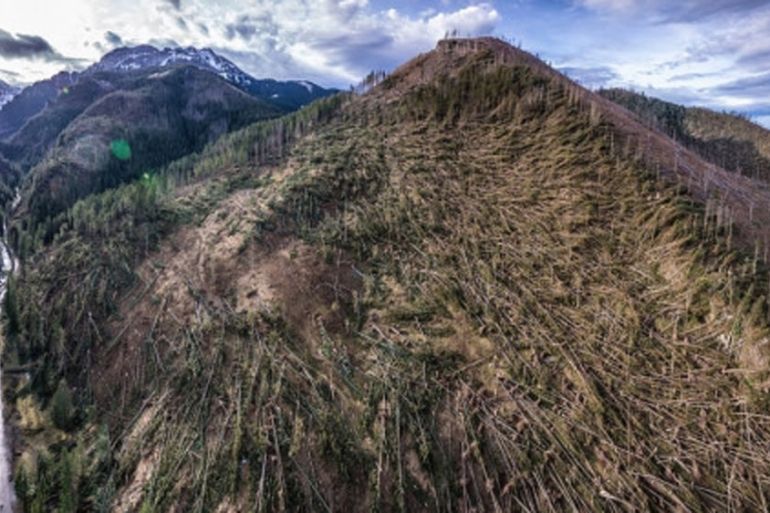Damaging winds strike southern Poland
A local phenomenon known as ‘Halny’ has once again blown out of the Tatras as a violent southerly.

Zakopane, in southern Poland, has once again suffered damage from a violent wind. Gusts of 105 kilometres per hour were recorded in the town after three days of increasingly strong, southerly winds.
Zakopane, the biggest mountain resort in Europe north of the Alps, is no stranger to wind damage. It suffers from the “Halny”, a local phenomenon, more than once a year.
Keep reading
list of 4 itemsPhotos: Deadly floods wreak havoc in Kenya’s capital
China evacuates over 100,000 as heavy rain continues to lash south
Asia bears biggest climate-change brunt amid extreme weather: WMO
The Halny is a foehn wind that blows in southern Poland and in Slovakia, on either side of the Tatra mountains. It is a southerly wind on the Polish side of these border mountains; in Slovakia, on the other side of the mountains, it blows as a northerly.
Halny is a local term derived from the word hala, meaning the grassy tundra-like cover typical of the higher parts of the Tatra Mountains. In Poland it blows primarily across the southernmost region of Podhale, but can reach as far north as the city of Krakow.
Foehn winds are found in any part of the world with significant hills or mountains. These winds, usually with a local name, are accelerated airflows on the lee side of a slope. On the windward side, a warm, moist wind blows, often producing persistent rain. The result is a cloudy wet day on one side of a mountain and a warm, sunny yet windy day on the other.
The Halny wind brings with it rapidly rising temperatures, causing snow and ice to melt suddenly, and sometimes leads to floods. It is often a disastrous storm, ripping off roofs, causing avalanches and, according to some people, influencing mental states.
The Halny occurs in October and November, sometimes in February and March, but rarely in other months. It is known for being strong, even reaching hurricane speed. The strongest-recorded Halny occurred in May 1968, when it destroyed large areas of local forests, reportedly blowing with a speed of 300km/h. That occurrence gained the name the “Wind of Century” in Poland.
This week’s warming Halny came to a sudden stop on Wednesday when it started to rain, then snow. The temperature dropped from 9C to -2C, and, as of Thursday, 32cm of snow sat on the ground.